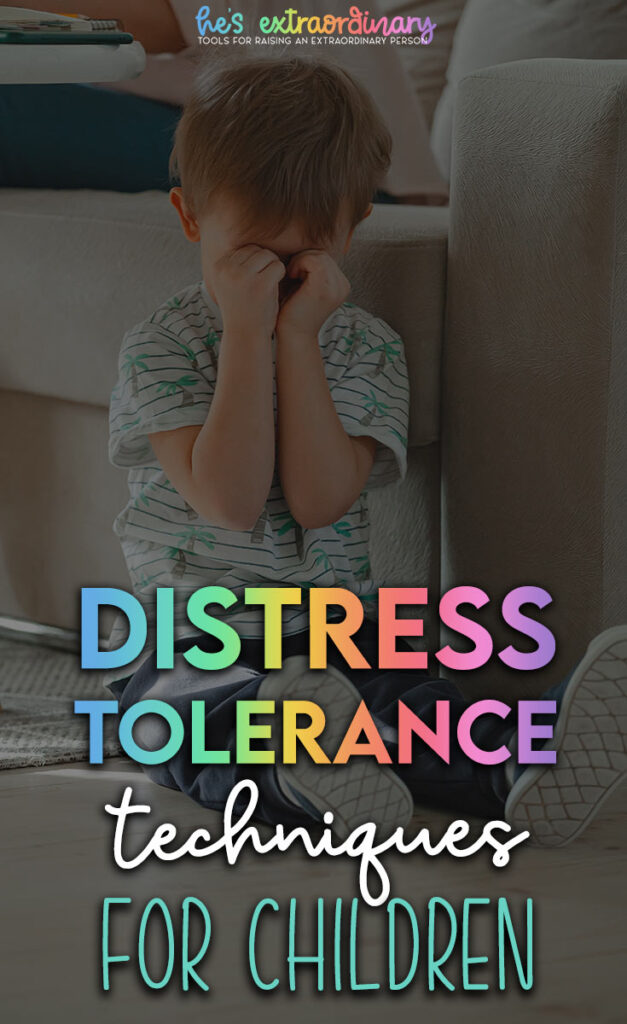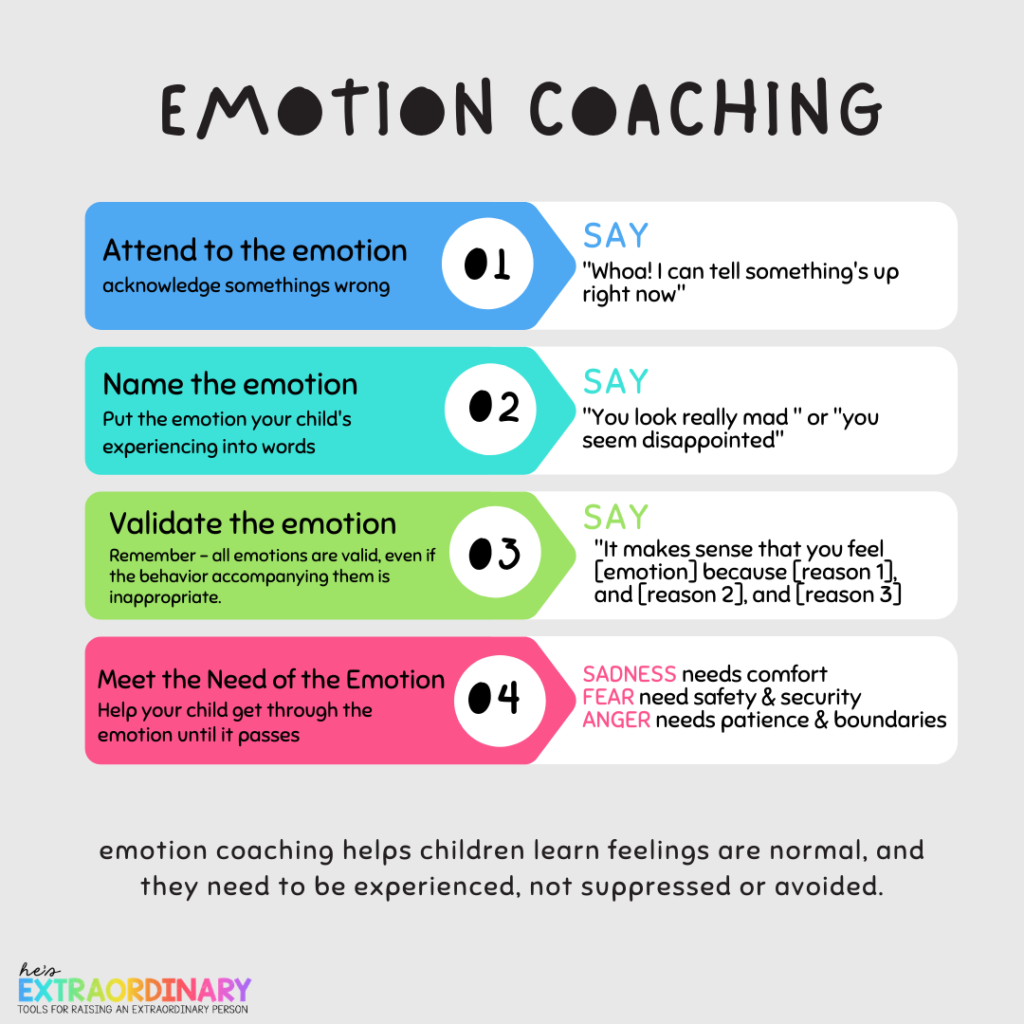Distress Tolerance: What Is It? How to Help Children Develop It
What’s inside this article: Information regarding distress tolerance – what it is, how low distress tolerance impacts children’s behavior, how you can help children build distress tolerance and learn healthy coping techniques.
Strong negative emotions, for example, shame, fear, anger, anxiety, guilt, and sadness are difficult for kids to manage. The stronger these emotions are, the more difficult they can be to control.
How well a person controls their emotions if affected by a skill called distress tolerance.
What Is Distress Tolerance?
Distress tolerance is a person’s ability to manage actual or perceived emotional distress. We all deal with varying levels of emotional distress daily, from minor irritations to high-stress situations.
Having distress tolerance means you can experience unpleasant and uncomfortable feelings without having unhealthy behavioral outbursts or making the situation worse.
People with low distress tolerance become overwhelmed in stressful situations and are more likely to have angry outbursts or meltdowns or use unhealthy coping strategies.
Children with low distress tolerance are more likely to exhibit challenging behavior and trouble self-regulating and coping with anger. They may become overwhelmed easily and from minor problems.
Learning distress tolerance techniques, and practicing those techniques, can help improve distress tolerance over time.

Types of Distress Tolerance Techniques
Everyone is unique, so different strategies may be more helpful than others. It’s important to find the right techniques for your child.
Distress tolerance techniques that may help children included:
Self-Regulation Strategies
Finding self-regulation strategies that help your child overcome negative emotions is crucial for building distress tolerance.
Self-regulation strategies need to be developmentally appropriate and functional (the child can use them when needed).
Many children find sensory experiences and exercise self-regulating. You can view this list of 120 self-regulation strategies for ideas to use with your children.
Emotion Coaching
Emotion coaching is the process of guiding your child through intense emotions by validating, relating, naming the emotion, and holding boundaries.
Children need to learn that emotions are normal, they’re important, and they need to be followed through (not suppressed or avoided).
This method was developed by Dr. Adele Lafrance Robinson and Dr. Joanne Dolhanty.
This process helps children learn emotional acceptance.
The steps to emotion coaching:

It’s important to do these steps in order. It can feel awkward at first, but with practice, it begins to flow more naturally.
- Attending to the emotion: This is just acknowledging that something is wrong. You could say something like “Whoa! Something is wrong” or “I can tell something’s up right now.”
- Name the emotion: Put the feeling your child is experiencing (or your best guess) into words. This helps your child to develop a vocabulary around their emotions. For example, “You’re really mad right now” or “You look disappointed.”
- Validate the Emotion: Try to see your child’s perspective and validate their feelings. It’s important to know all emotions are valid, even if the behavior accompanying them is inappropriate. Say “It makes sense that you’re feeling ______________, because _________________________”. For example, “It makes sense that you’re mad because things didn’t go your way, and that can be frustrating.”
- Meet the Need: Meeting the need means helping the child follow-through with the emotion, and it depends on what your child’s emotion is – if your child feels sadness, they need comfort; if they feel fear, they need safety and security, if it’s anger – depending on the cause – you may need to coach them through an appropriate way of setting a boundary, or you may have to be firm (but kind) with your own boundaries and help them calm down.
Improving the Moment
This technique involves using a variety of strategies to help make the stressful situation more tolerable.
This is, of course, easier said than done because sometimes, when we’re upset, even if we know what we need to do, we feel more resistant to actually doing it.
Using visualization strategies, looking for a positive in the situation, taking action to solve the problem, are all examples of ways to improve the moment.
Most kids will need guidance and coaching to use this technique, as it’s something that even adults often struggle to do.
Psychoeducation
Psychoeducation means providing education and information to those seeking or receiving mental health services, such as people diagnosed with mental health conditions and their family members.
As a parent or educator, it’s about teaching kids or teens about how their brain works and why they sometimes react the way they do.
Psychoeducation can also mean teaching more about topics that surround children with a lot of worries – because, as the old saying goes – knowledge is power.
Teaching your child about why their bodies react to stress the way they do can help them accept and understand those sensations better.
You can use this free printable that explains the brain’s stress response to children. Download it here.
Positive Affirmations
Negative thinking patterns and negative beliefs about oneself make it harder to cope with emotionally upsetting events.
Negative thoughts like:
- “I can’t cope with this.”
- “This feeling will never go away.”
- “I am the worst person. I hate myself.”
- “There is no point in trying”
- “I hate this feeling.”
Using positive affirmations improves distress tolerance by helping children build a positive mental attitude, improve self-esteem, and ultimately develop a growth mindset.
When you have low expectations for yourself, you tend to sink down and meet those low expectations. However, when you think positively and believe in yourself, you’re more likely to succeed.
Learn more about teaching children to use positive affirmations here.
Therapeutic Options for Building Distress Tolerance
For some kids, uncomfortable feelings are too intense, too overwhelming, and practicing distress tolerance techniques isn’t helpful on its own.
When this is the case, a therapist can help teach your child skills that will help improve their distress tolerance.
Occupational Therapy
Occupational therapists can help children with sensory challenges, such as over-sensitivity to certain stimuli, that affect distress tolerance by making situations more overwhelming.
They can also help children develop coping skills, self-regulation skills and to understand and identify their emotions.
Dialectical Behavior Therapy (DBT)
Dialectical behavior therapy is a therapeutic technique that was initially developed for Borderline Personality Disorder, but is now used treat a range of other conditions, including:
- Anxiety disorders
- Mood disorders
- Post-traumatic stress disorder (PTSD)
- Substance use
It is a form of cognitive-behavioral therapy (CBT) that incorporates mindfulness meditation, interpersonal effectiveness, emotional regulation, and distress tolerance skills.
Exposure Therapy
Stress causes physical sensations that affect how people think about and respond to stress.
Exposure therapy slowly and systematically helps a child face their fears, helping them learn to tolerate uncomfortable situations and emotions until it subsides rather than reacting by escaping or avoiding, or having behavioral outbursts.
This helps improve a person’s ability to tolerate the effects of intense negative emotions in the body, such as increased heart rate and muscle tension.
Distress tolerance is a skill that we continue to develop throughout our lives and everybody handles distress a bit differently.
The most important thing is teaching children healthy and appropriate ways to cope with stressful situations, seeking professional assistance if needed.

